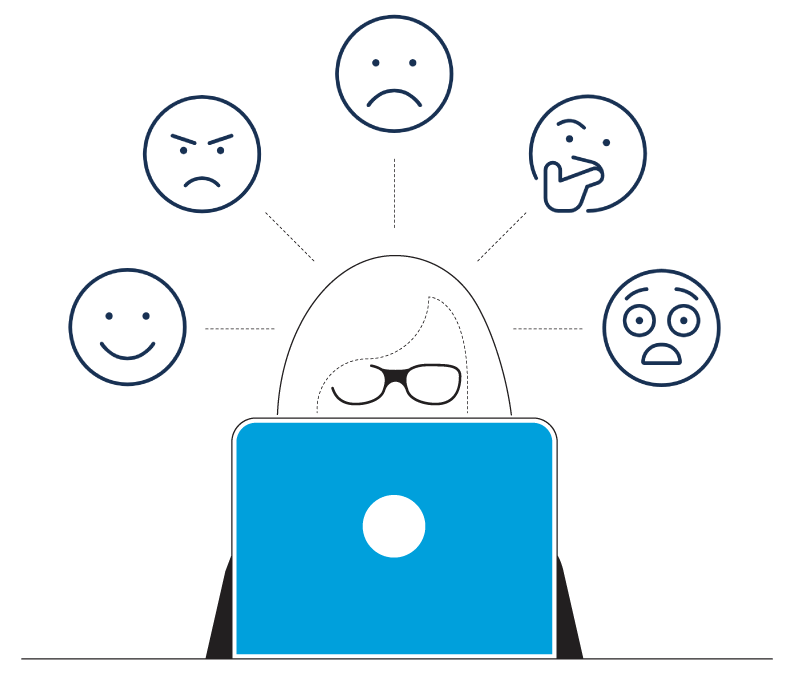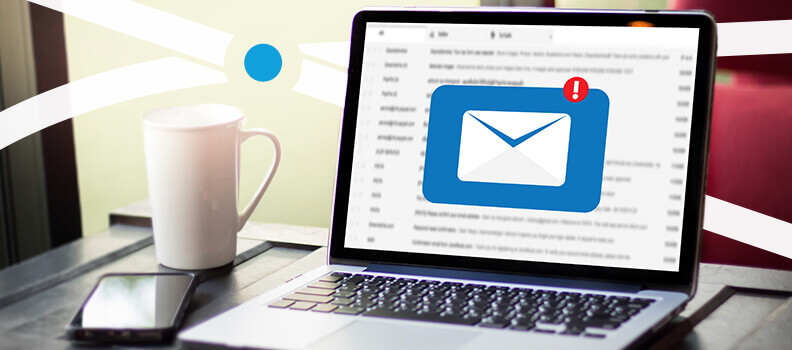Close your eyes and picture the last thing you bought on a whim.
What prompted the purchase?
You might respond with something like, “I remembered I wanted it” or “I saw it when I was checking out.” And those responses would be correct. But we’re willing to bet that there is an additional component that inspired you to act.
Your emotions.
Evoking emotion is a powerful way to drive interest as well as purchases. But the questions remain:
What is emotional marketing?
How do you use it to grow your business?
What is emotional marketing and why is it important?
Emotional marketing is a strategy that aims to connect with customers on a deeper, emotional level by evoking specific feelings and creating a sense of connection with a brand.
It is important for businesses to use emotional marketing because doing so can lead to increased customer loyalty, higher customer lifetime value, and even better brand recognition. Additionally, emotionally-driven advertisements often perform better than those that rely on simple product features and benefits.
According to research by the Advertising Research Foundation, advertisements that elicit an emotional response are more effective than those that only provide information. In fact, ads that evoke a strong emotional response can be up to twice as effective in driving consumer engagement and purchasing behavior.
Needless to say, by tapping into the emotions of their customers, businesses can create a deeper connection with their audience, leading to more effective marketing campaigns and increased sales.
What makes emotional marketing effective?
Connecting with consumers on a personal level is part of what makes an emotional marketing strategy so effective. By appealing to the emotions of your audience, you can create a stronger connection with your target market and make your brand more memorable.
Evoking feelings and memories around your brand and creating a strong sense of loyalty among your consumers will help drive even more sales.
Here are a few more reasons emotional marketing is effective:
- It improves customer retention: By creating an emotional connection with customers, emotional marketing can help to retain customers for longer periods of time.
- It increases the effectiveness of advertising: Emotional advertising can be more effective than rational advertising, as it can capture the attention of the audience more easily and make a deeper impact.
- It generates word-of-mouth marketing: Positive emotions can be contagious and can lead to customers spreading the word about a brand or product to their friends and family.
Emotions that you can market to
You might think that using only positive emotional marketing is effective, but nothing could be further from the truth. All human emotions have been evoked by marketing campaigns. The important thing is knowing what emotion you want to elicit, when.

Happiness can be used in emotional marketing as a way to create positive associations with a product or brand, making it more appealing to consumers. This can be achieved through various tactics like using humor or even highlighting how a product or service can improve a consumer’s life.
Anger can be used as a way to motivate consumers to take action, such as by raising awareness of a social or political issue, or by encouraging them to speak out against a problem. For example, a company might use anger in a marketing campaign to highlight the negative effects of a specific behavior, such as pollution, in order to inspire consumers to take steps to address the issue.
Sadness can be used in emotional marketing as a way to create empathy and emotional connection with consumers, which can lead to increased brand loyalty and engagement. However, it’s important to use sadness in a way that is authentic and not manipulative.
Creating a sense of nostalgia is a great example of how marketing can evoke memories of a time or place that is no longer present, creating a sense of sadness and longing in consumers.
Fear can be used as a way to create a sense of urgency and motivate consumers to take action, such as making a purchase or signing up for a service. That said, it’s important to use fear in a responsible and ethical manner. Some ways you can use fear in an emotional marketing campaign include highlighting potential risks or negative consequences or creating a sense of scarcity.
Each emotion matters because it can influence how consumers perceive a product or brand, and ultimately impact their purchasing decisions. By understanding the emotion you want to elicit, you can create a more effective campaigns and messaging.
How to create emotionally impactful messages
Whether you want to create an emotionally impactful message for your audience via email, direct mail, display ads, or something else, there are some tried and true practices you should keep in mind. By following these seven steps, you’re more likely to get positive results.

Understand your target audience
The first step in creating an emotionally impactful message is gaining a better understanding of your customers. This includes their demographics, values, beliefs, and pain points.

Identify the emotions you want to evoke
Once you understand your target audience, you need to identify the emotions that you want to evoke in them. This could be happiness, excitement, trust, or any other emotion that is relevant to your brand or product.

Create a strong, clear message
Your message should be clear, concise, and easy to understand. It should also align with the emotions that you want to evoke in your audience.

Use storytelling
Storytelling is a powerful tool for evoking emotions. Use anecdotes, personal experiences, or relatable characters to create an emotional connection with your audience.

Include powerful visuals
Visuals can be incredibly powerful in evoking emotions. Use high-quality images or videos that align with your message and the emotions you want to evoke.

Find the right tone of voice
The tone of voice you use in your message can also have a big impact on how it is received. Choose a tone that is consistent with the emotions you want to evoke, and that is also in line with your brand.

Test and optimize
Lastly, test different versions of your message and see which one resonates best with your audience. Use the feedback to optimize your message and make it even more emotionally impactful.
Campaigns that have done emotional marketing right
Need a great example of emotional marketing done right? Below, we’re sharing three very different examples of how brands approached an emotional marketing strategy and why their plan was so effective.
Procter & Gamble launched a campaign for the 2016 Rio Olympics which focused on the emotional bond between mothers and their children.
And it was a hit.
In addition to using powerful storytelling to showcase the emotional bond between mothers and their children, which helped to create a sense of nostalgia and emotional connection, the campaign featured a diverse group of mothers and their kids, which helped to create a sense of inclusivity and relatability for a wide range of consumers.
In 2022, VRBO launched a campaign called “A Place for Together” which aimed to tap into the idea of getting together, presumably after a long time apart. This was especially effective timing due to many people being able to reunite with their families for the first time since the COVID-19 pandemic began.
By using emotional appeals, the campaign effectively connects with its target audience and creates a strong brand association with the idea of togetherness and family. Additionally, the use of a diverse cast and beautiful travel imagery in the campaign adds both relatable and authentic aspects to the message.
In 2020, Coca-Cola launched a campaign called “Taste the Feeling” which aimed to tap into the emotional connection that people have with the brand.
By using relatable, everyday moments of happiness and celebration that can be shared over a Coca-Cola, as well as positive music and sound, and a strong tagline, the campaign effectively connects with its target audience, creating a strong emotional association with the brand.






